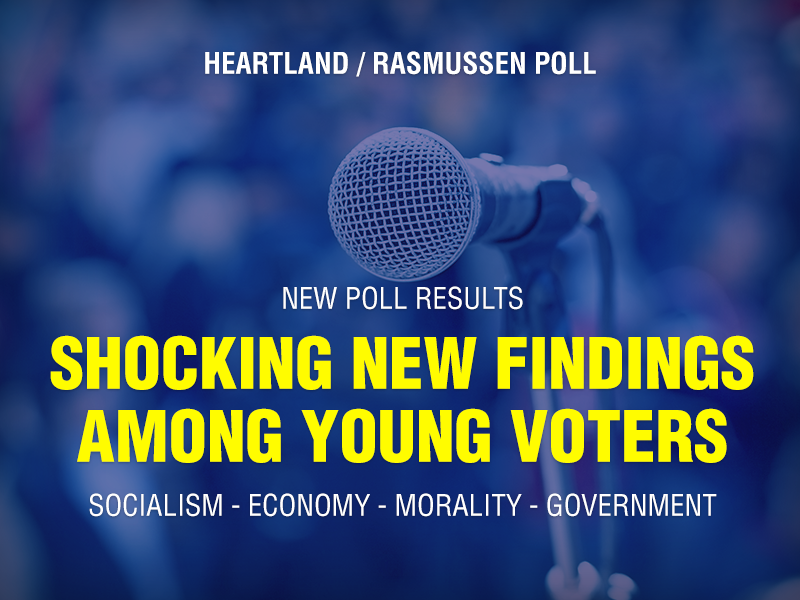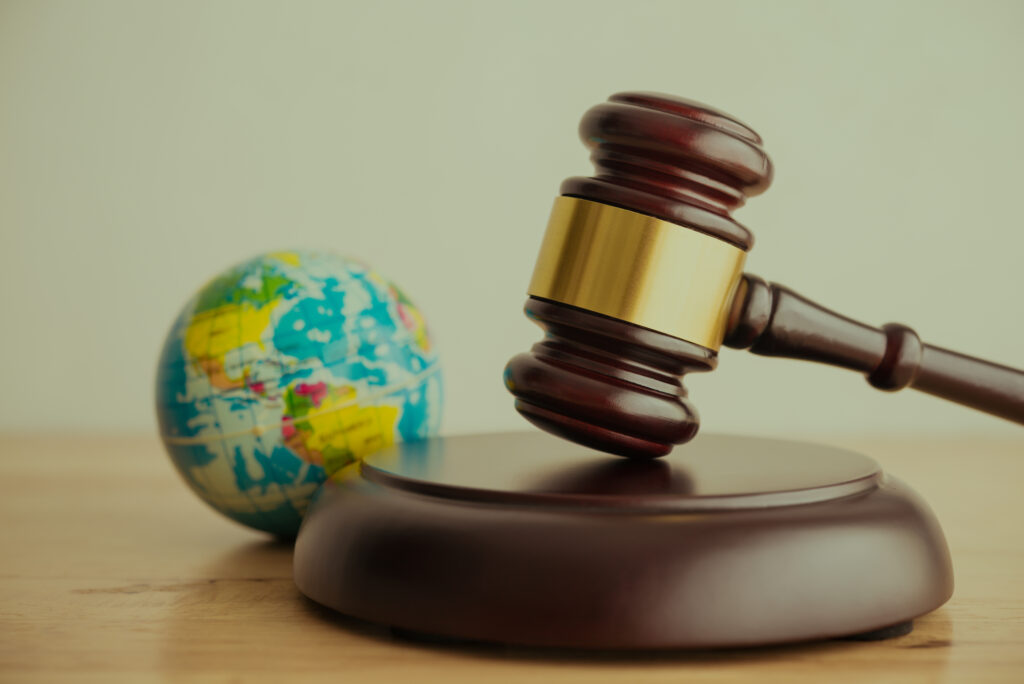More than 190 nations signed the Paris Climate Agreement in 2015. These nations pledged to cut or cap their greenhouse gas emissions—primarily carbon dioxide from burning of fossil fuels—to prevent global average temperatures from rising 2 degrees Celsius above preindustrial levels.
In truth, the agreement was a fraud from the start—all style, no substance. To stop temperatures from rising by the required amount would necessitate reducing global greenhouse gas emissions by 70 percent by 2050. Furthermore, countries would have to become fully carbon-neutral by 2100. Yet the plans submitted by the nearly 200 countries would result in less than half the greenhouse gas cuts required to prevent the 2-degree temperature rise—and the government negotiators knew this all along.
Assuming, for the sake of argument, the Paris climate negotiators truly believed the Earth is threatened by catastrophic anthropogenic climate change, it’s fair to ask whether the countries involved in the agreement are making the reductions necessary to prevent the supposed planetary doom. Are they walking the walk or just talking the talk? The answer is the latter.
For instance, China’s carbon dioxide emissions rose at the fastest rate in seven years during the first quarter of 2018, according to Greenpeace. China is the world’s biggest greenhouse gas emitter and its government data show the country’s carbon dioxide emissions were 4 percent higher in the first quarter of 2018 than at the same time in 2017. If they remain 4 percent higher than 2017 throughout the year, it would mark the largest single-year growth in China’s emissions since 2011.
China’s emissions have increased steadily since the second quarter of 2016, not long after it agreed to limit carbon dioxide emissions under the Paris agreement.
The International Energy Agency (IEA) has even more bad news for climate alarmists: a recent report reveals global carbon dioxide emissions surged to record levels in 2017. According to IEA, energy-related emissions climbed 1.4 percent in 2017, equivalent to adding 170 million cars to the roads. Worldwide demand for energy increased 2.1 percent in 2017, with fossil fuels accounting for approximately 72 percent of the increased use.
Although developing countries in Asia accounted for 66 percent of the global emissions increase, the European Union, which pushed the hardest for steep emissions reduction commitments in Paris, saw its emissions grow as well: by 1.5 percent, or 50 million tons, in 2017 alone.
Germany set an aggressive near-term goal of cutting greenhouse gas emissions 40 percent below 1990 levels by the year 2020, yet admitted in early 2017 it would be unable to hit its target because in 2015 and 2016 it burned more coal.
In early 2017, France announced its carbon dioxide emissions grew by 3.6 percent in 2016 and were expected to be higher still in 2017.
In 2017, carbon dioxide emissions increased in several African countries, too, as well as in Brazil, India, Qatar, and Russia. Turkey’s emissions soared by a whopping 13 percent in 2017.
World leaders castigated President Donald Trump when he withdrew the United States from the Paris Climate Agreement, saying it was a bad deal for America. Activists labeled him a climate villain. Yet despite Trump’s decision to pull out of the Paris Agreement and instead prioritize robust economic growth in United States, America experienced the largest year-over-year reduction in carbon emissions—a 0.5 percent decline—of any advanced nation. U.S. emissions fell for the third consecutive year, without government restrictions on fossil fuel use. On emission reductions, actions should speak louder than words. Trump’s energy policies, which elicit scorn from climate activists and many world leaders, should draw praise.
Climate treaties are mostly about delivering power over the world’s economy to international bureaucrats, not preventing global warming. No one should be surprised by this. Christiana Figueres, then the executive secretary of the Framework Convention on Climate Change, admitted as much at a 2015 climate conference in Brussels: “This is the first time in the history of mankind that we are setting ourselves the task of intentionally … to change the economic development model that has been reigning for at least 150 years, since the Industrial Revolution.”
Unfortunately, this sinister motive is silenced by the deafening roar surrounding pronouncements of climate doom. In the immortal words of songwriter Don McLean, “They would not listen. They’re not listening still. Perhaps they never will.”
— H. Sterling Burnett
SOURCES: The Heartland Institute; Unearthed; Scientific American; The Washington Post (behind paywall); United Nations
IN THIS ISSUE …
Another judge questions climate lawsuit claims … EPA social cost of carbon rewrite under microscope … Best Schools acknowledges climate debate isn’t over
ANOTHER JUDGE QUESTIONS CLIMATE LAWSUIT CLAIMS
U.S. District Judge John F. Keenan seemed skeptical of New York City’s standing to bring its lawsuit against the oil companies BP, Chevron, ConocoPhillips, Exxon Mobil, and Royal Dutch Shell to hold them responsible for damage from climate change, after getting the city to admit it holds investments in those companies and its police, fire, emergency, and sanitation vehicles use their products. As the Washington Times reports, Keenan asked, “Aren’t the plaintiffs using the product? Does the city have clean hands?”—to which the lawyer arguing New York City’s case replied, “Yes, the city uses fossil fuels.”
The hearing was held to determine whether Keenan should dismiss the case, as the oil companies have requested. Keenan has yet to rule on the motion.
Defendants’ attorney Theodore Boutrous said the city was “was trying to hold the companies responsible for the ‘way civilization and humankind has developed over the ages … back to the Industrial Revolution.” Boutrous further argued allowing the lawsuit to proceed would result in unending litigation. “It really would involve everybody suing everybody for living our lives the way we do and using the power sources that we have,” Boutrous told the court.
SOURCE: Washington Times
EPA SOCIAL COST OF CARBON REWRITE UNDER MICROSCOPE
At the request of seven Democratic senators led by Sheldon Whitehouse (D-RI) and Dianne Feinstein (D-CA), the Government Accountability Office (GAO) has agreed to review how the federal government, states, and other nations calculate the social cost of carbon (SCC), a measure assigning a dollar value to the potential harm caused by carbon dioxide emissions purportedly altering the climate.
The Obama administration estimated the SCC at $42 per ton by 2020, and it imposed restrictions on carbon dioxide emission to reduce those presumed costs. Upon reviewing Obama’s Clean Power Plan, the Trump administration estimated the SCC at $5 per ton.
Many critics complained the Obama administration’s SCC calculation, contrary to law, considered the costs of U.S. carbon emissions to other countries’ regulations are supposed to be based solely on the domestic costs of the activity being considered for regulation—thus dramatically inflating the SCC number. In addition, critics noted the Obama administration’s SCC did not account for the benefits of the uses of fossil fuels which result in the carbon dioxide emissions, meaning the SCC fails to tote up accurately the net costs or benefits of fossil fuel use.
Trump signed an executive order in March 2017 disbanding the interagency working group tasked with determining the annual social cost of carbon. Following Trump’s lead, Environmental Protection Agency Administrator Scott Pruitt issued a formal notice on June 7 the agency would be reconsidering how it calculates the SCC, making it a true cost-benefit analysis.
“Many have complained that the previous administration inflated the benefits and underestimated the costs of its regulations through questionable cost-benefit analysis,” Pruitt said in the statement made announcing the SCC review. “This action is the next step toward providing clarity and real-world accuracy with respect to the impact of the agency’s decisions on the economy and the regulated community.”
“Punishing regulations like the so-called ‘Clean Power Plan’ would have cost Wyoming’s energy workers their jobs and devastated communities throughout the state,” Sen. John Barrasso (R–WY), chairman of the Senate Environment and Public Works Committee, told The Hill, praising Pruitt’s decision. “Now the Trump administration is taking important steps to make sure the agency can no longer abuse the cost-benefit analysis process.”
SOURCES: The Hill; Environmental Protection Agency; The Hill
BEST SCHOOLS ACKNOWLEDGES CLIMATE DEBATE ISN’T OVER
In a break with standard operating procedure in the climate war, educational website thebestschools.org has published a list of “The Top 15 Climate-Change Scientists: Consensus & Skeptics.” You read that right: a prominent mainstream educational organization included climate skeptics among its list of what it considers to be the best scientists studying climate change.
The three criteria Best Schools used were (1) scientific prestige in one of the many scientific disciplines which inform the climate debate, “from the earth sciences to biology to physics, especially thermodynamics and fluid dynamics”; (2) prominence in the debate, meaning the work of the researcher in question must be known to many of the other scientists working on climate change; and, the shocker to some, (3) representation of both sides.
Best Schools recognizes acknowledging there is still an ongoing debate over the causes and consequences of climate change will be controversial to some and even heresy to others. The article thoughtfully defends this position:
We are well aware that those who support the mainstream position that anthropogenic climate change represents a grave threat to the future of humanity will deplore our decision to represent both side of the debate (or even to characterize the ongoing discussion as a “debate” at all). They have convinced themselves that only cranks and paid stooges could possibly disagree with them. We see things differently.
Simply stated, we maintain that appeals to authority and scurrilous ad hominem attacks are no substitute for rational argument. We also hold that what is sauce for the goose is sauce for the gander. This means, among other things, that mainstream climate scientists who roundly condemn climate skeptics for seeking support from private industry ought to be a bit more circumspect, seeing that they themselves receive millions in financial backing from government agencies. The tacit assumption behind their indignation—that only private actors have material interests, while public actors are by definition impartial seekers after truth—simply won’t wash.
Our position is simple. It is the classical liberal one. … [T]he truth is one thing, my knowledge of it is something else. And because this means that the essence of rational inquiry is intellectual humility. And also because the slow and painful advance towards truth is best served by the open and honest airing of disagreement. For all of these reasons, we deplore all attempts to use political muscle to shut down academic debate. Perhaps our liberal take on the ethics of inquiry has become unfashionable in this postmodern age. To which we respond: So much the worse for intellectual fashion.
Three of the five climate realists who made Best Schools’ list—John Christy, Richard Lindzen, and Nir Shaviv—have either worked with The Heartland Institute or participated in one or more of Heartland’s 12 International Conferences on Climate Change.
One may quarrel with Best School’s selection criteria and thus with some of their choices, both whom they included in the list and those they left off. For instance, it is not clear to me scientific prestige or prominence in the climate debate necessarily identifies the best scientists studying climate change. Often the most prominent scientists are those who shout the loudest or make the most outrageous claims, which result in increased media coverage. I would argue many of the most prominent or prestigious scientists working in the field long ago abandoned the scientific method in order to further their political or social goals. Having said this, it is refreshing to see a prominent education group approach the topic of climate change with an open mind and promote the virtues of transparent and honest debate on matters of scientific import as the most likely way for discovering truth.
Bravo, Best Schools!
SOURCES: Climate Etc.; Best Schools



